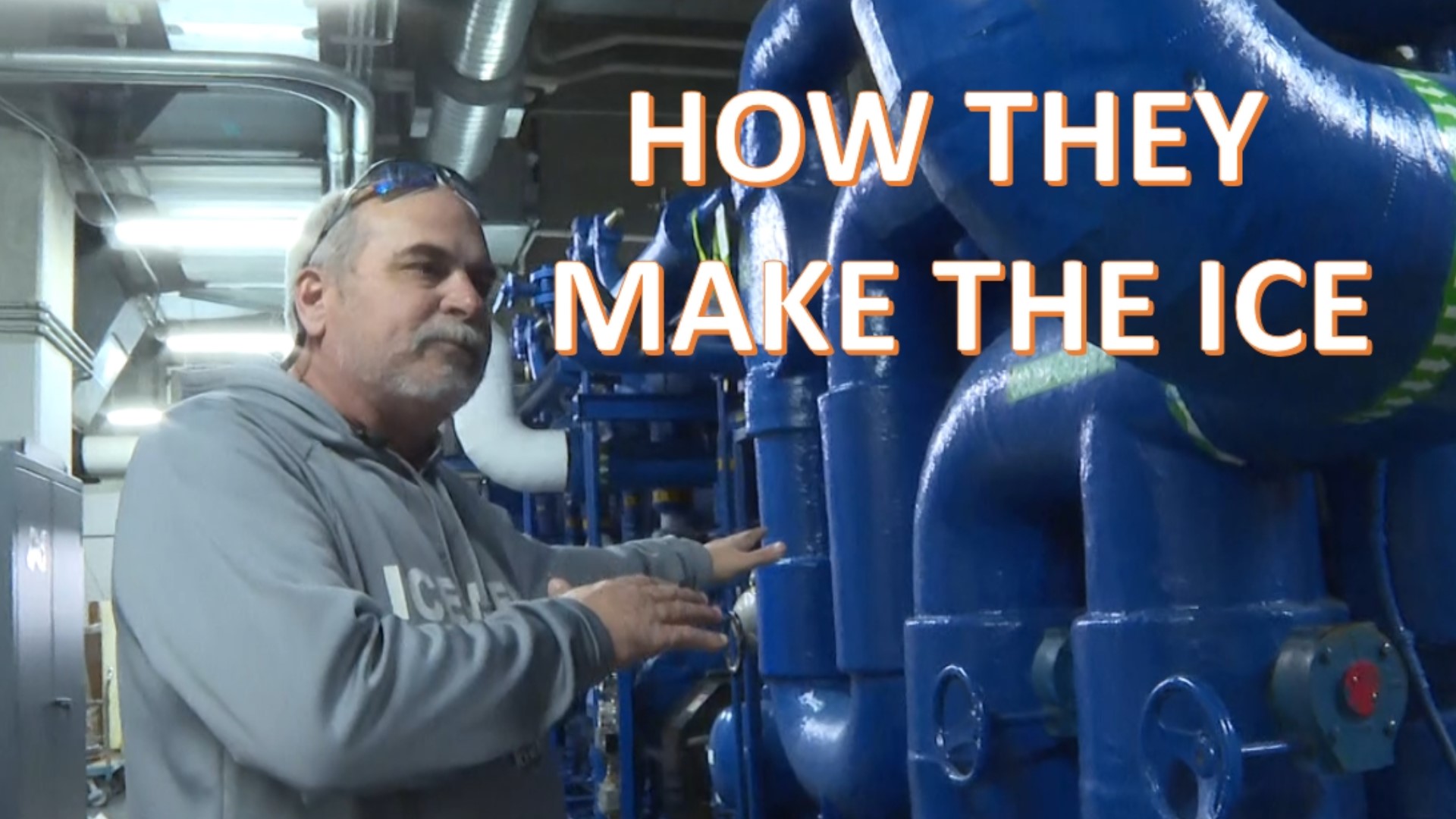JACKSONVILLE, Fla. — As a fan on the spectator side, it's easy to underestimate the effort required to sustain a pristine ice surface in Florida's heat. Yet, for the players of the Jacksonville Icemen, ensuring ideal ice conditions involves a complex process that goes far beyond merely dousing the ground with water.
Creating ice that meets the high standards of professional hockey players, demands precision and ingenuity. For the Icemen, the key to good ice lies in its smoothness. According to players, it should be free of rough patches that could hinder the flow of the game, giving the skaters a seamless experience, rather than making them feel like they're on a makeshift pond hockey rink.
Maintaining the desired ice quality in Florida's climate is an uphill battle.
"You have to have a rink that keeps the air in the rink consistent; it's tough in this Florida climate," said Travis Trusty, one of the experts who makes the ice at VyStar Veterans Memorial Arena.
To comprehend the intricacy involved in maintaining a pristine ice surface, it's crucial to understand the processes behind-the-scenes. At VyStar, the ice-making plant employs a substantial setup. The process kicks off by activating three 80-ton compressors. The compressors utilize a refrigerant called 'freon,' to cool a brine mixture — a saline solution. This chilled brine mixture circulates beneath the ice rink in a grid pattern, allowing the floor temperature to drop to approximately 14 degrees Fahrenheit.
Once the floor reaches the desired temperature, the crucial step of spraying water begins. The water freezes on contact with the cold surface, eventually forming the ice that hockey players glide across. The process is time consuming and is applied layer by layer over several days when it is first laid down.
But, what makes this particular method unique, is the use of saltwater in the process. The reason behind this choice is simple: "Fresh water will freeze up at 32 degrees [Fahrenheit], but the saltwater mixture will not freeze up," Trusty told First Coast News. Thus, saltwater serves as the ideal coolant for the cement floor beneath the ice.
While the floor beneath the ice is chilled by saltwater, the visible ice layer is made clear through an ionization process. The water goes through an ionizing system before filling the 'Zamboni,' which helps achieve the desired ice clarity for games.
So, when the players hit the ice, just how cold is it at VyStar Veterans Memorial Arena during a game? The answer: a chilly 21 degrees. This temperature ensures the ice remains hard and consistent, allowing players to hear the satisfying crunch of their blades as they turn — a sign of excellent ice quality.
"What's a test of good ice is if you hear the crunch of the blades when their turning, it's a great sound," Chief Ice Manager at VyStar Matt Blasey said.
It's fascinating to note that the transformation of VyStar Veterans Memorial Arena from a concert venue to an ice rink, takes approximately eight to 10 hours. The complexities and dedication required to maintain top-quality ice at this Florida venue, showcases the impressive behind-the-scenes efforts supporting the sport of hockey in the Sunshine State.

